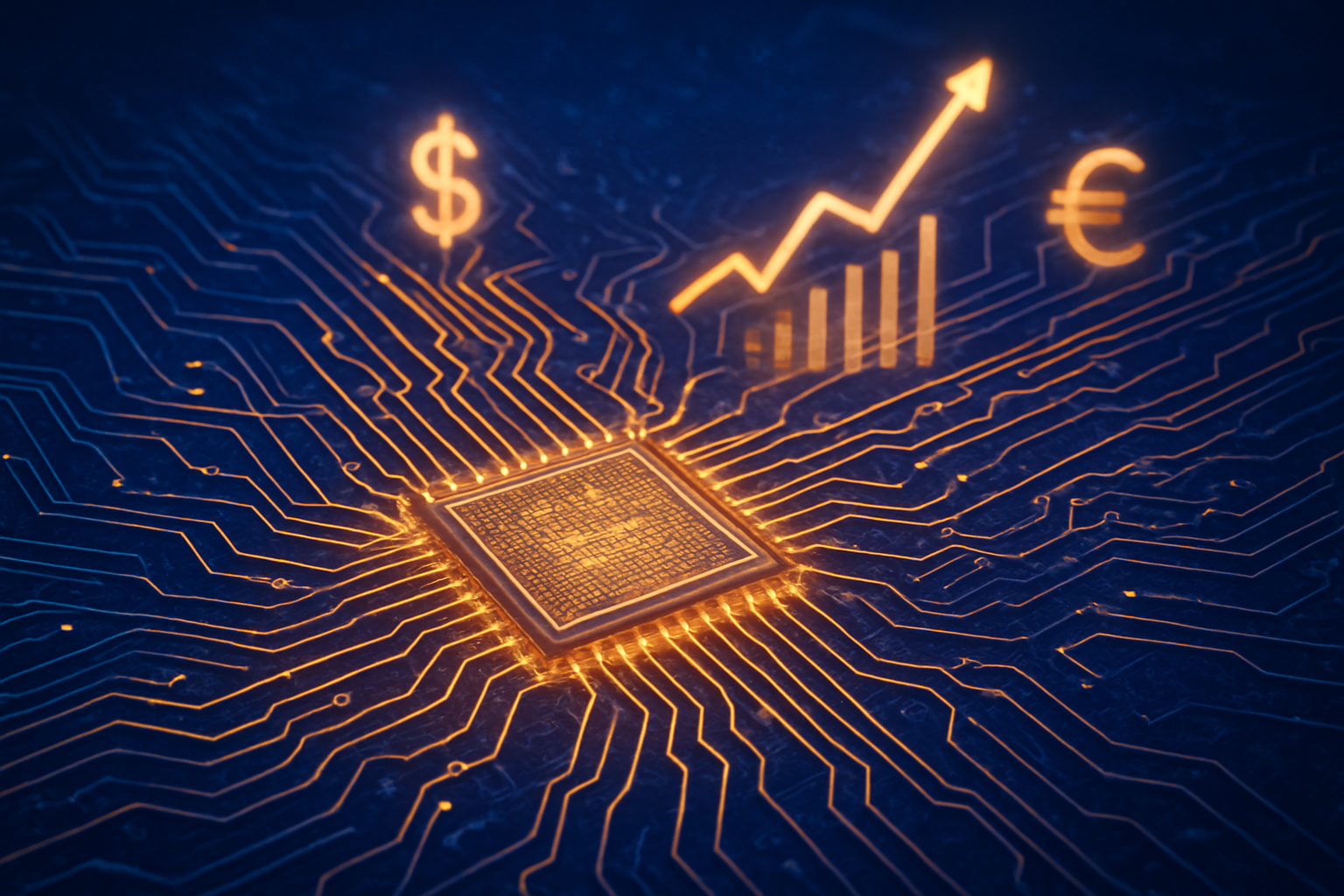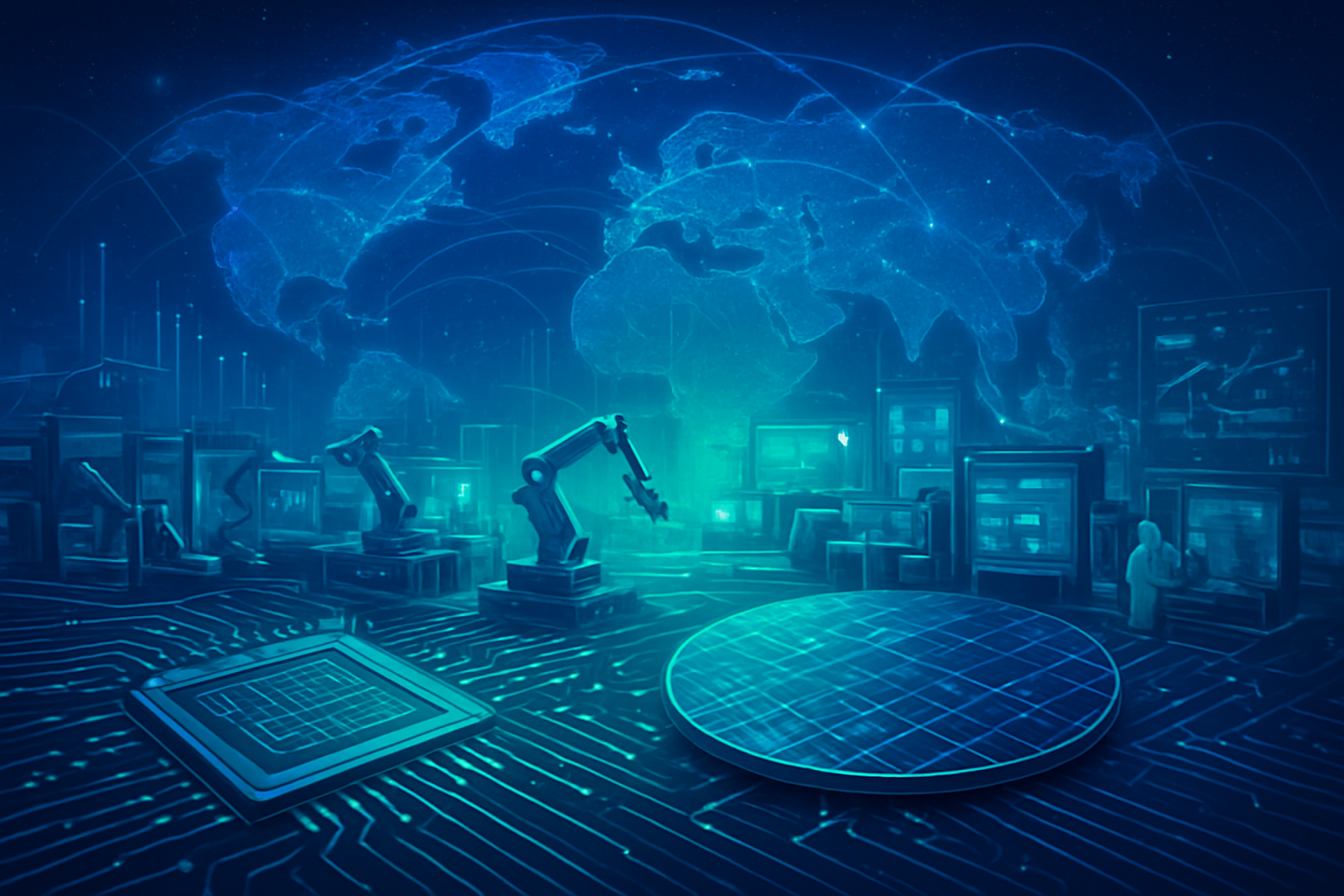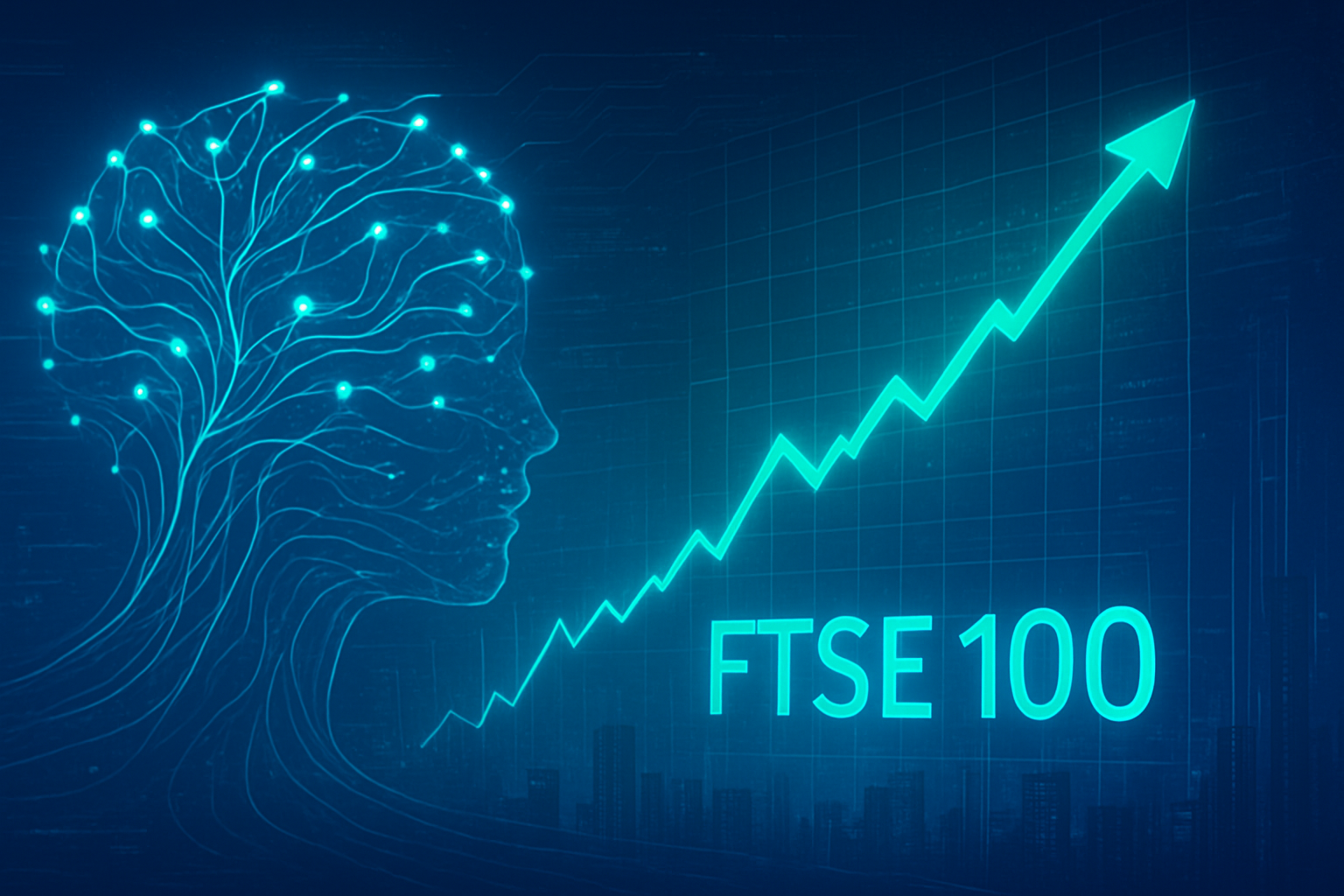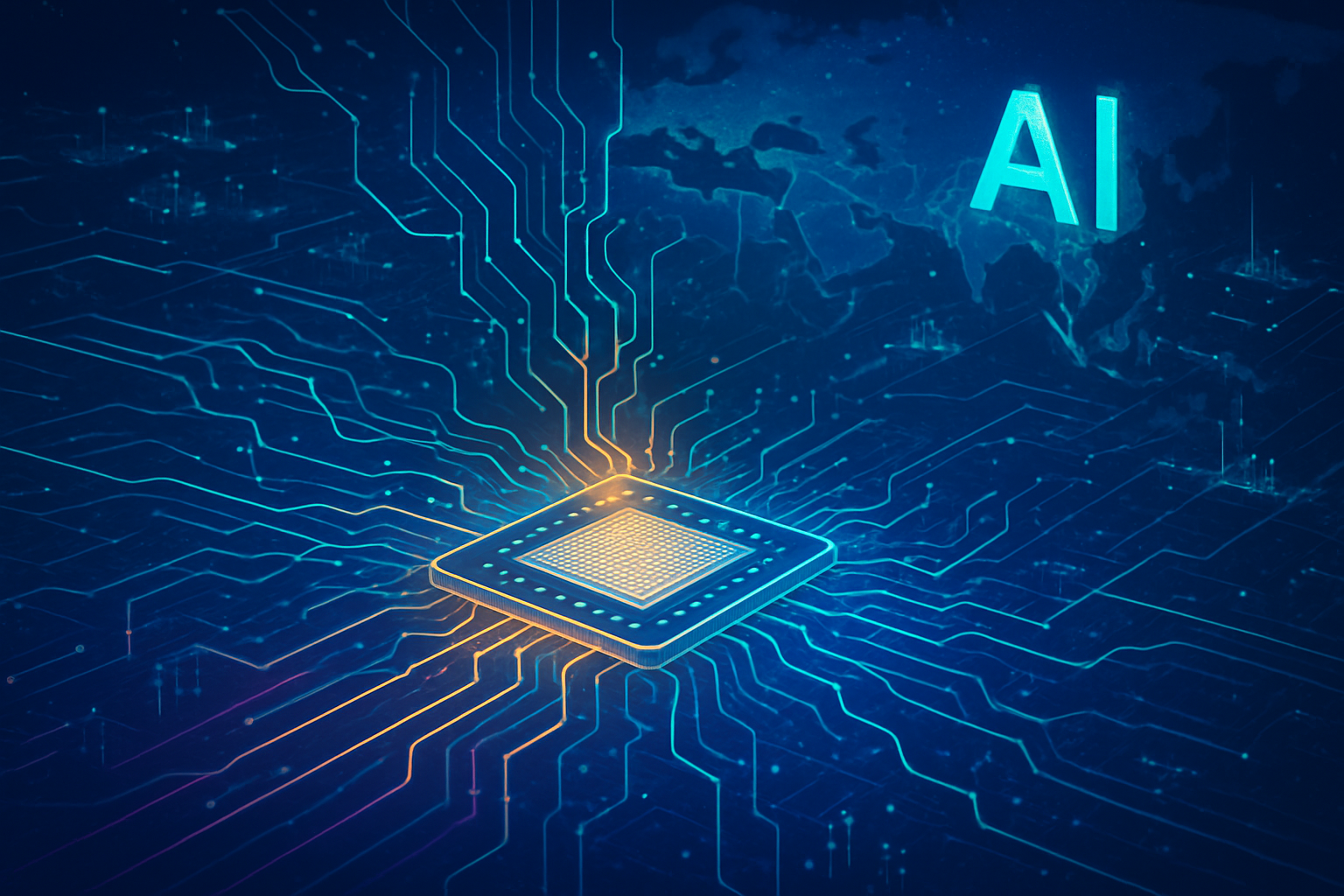In late 2025, the global economy finds itself grappling with a complex web of inflationary pressures, a significant thread of which traces back to the insatiable demand for semiconductors. These tiny, yet powerful, components are the bedrock of modern technology, powering everything from advanced AI systems and high-performance computing to electric vehicles and the burgeoning Internet of Things. As the world accelerates its digital transformation, the unprecedented appetite for these chips is driving up their prices, directly contributing to broader producer price increases and exerting a tangible influence on global economic inflation. This dynamic creates a challenging environment for industries worldwide, as the cost of essential technological building blocks continues its upward trajectory.
The confluence of rapid technological advancement and strategic global shifts has intensified the demand for semiconductors, pushing the industry into a period of robust growth. With global market projections for 2025 soaring well into the hundreds of billions, the ripple effects of rising silicon costs are now being felt across diverse sectors. From the factory floors of automotive giants to the expansive data centers of cloud providers, the increasing expense of integrated circuits is reshaping production costs, supply chain strategies, and ultimately, the prices consumers pay for a vast array of goods and services. Understanding the intricate economic mechanisms at play is crucial to navigating this new inflationary landscape.
The Economic Engine: How Tech Demand Ignites Inflation
The connection between surging semiconductor demand and global economic inflation is not merely coincidental; it's rooted in fundamental economic mechanisms that propagate through supply chains. At its core, the robust demand for semiconductors, particularly advanced chips crucial for AI and high-performance computing, creates a supply-demand imbalance that inevitably leads to price increases. These elevated prices then act as a significant input cost for downstream industries, directly contributing to producer price inflation.
Consider the direct evidence from late 2025: South Korea, a global semiconductor powerhouse, reported a 1.5% year-on-year increase in its producer price index in October 2025, the highest in eight months. A primary driver? Soaring semiconductor prices. Specifically, DRAM ex-factory prices surged by an astonishing 46.5% year-on-year, while flash memory prices climbed 24.2%. These aren't isolated figures; they represent a direct and substantial upward pressure on the cost of goods for manufacturers globally. As semiconductors are foundational components across countless sectors, any increase in their cost acts as a form of input cost inflation. This is particularly evident in high-tech manufacturing, where chips represent a significant portion of a product's bill of materials.
This inflationary pressure then propagates through global supply chains. When chip shortages occur or prices rise, it leads to production delays, higher manufacturing costs, and ultimately, limited availability and increased prices for end products. The automotive industry, for instance, despite a mixed outlook for the overall market, faces escalating costs due to the increasing semiconductor content in modern vehicles, especially electric vehicles (EVs). Similarly, in consumer electronics, higher costs for advanced processors and memory chips—driven by strong demand from AI-enabled devices—mean manufacturers of smartphones, laptops, and smart TVs face increased production expenses, which are often passed on to consumers. Even data centers and cloud computing providers face substantial investments in AI infrastructure, including expensive AI accelerators and high-bandwidth memory (HBM), leading to higher operational and capital expenditures that can translate into increased service fees for businesses and end-users.
Competitive Currents: Impact on AI Companies, Tech Giants, and Startups
The inflationary impact of semiconductor demand is reshaping the competitive landscape for AI companies, tech giants, and startups alike, creating both opportunities and significant challenges. Companies with strong existing relationships with chip manufacturers or those with proprietary chip designs stand to gain a strategic advantage, while others may struggle with rising costs and supply uncertainties.
Major AI labs and tech companies with deep pockets, such as NVIDIA (NASDAQ: NVDA), Intel (NASDAQ: INTC), and AMD (NASDAQ: AMD), which are also major chip designers or manufacturers, are in a unique position. They can better manage their supply chains and even benefit from the increased demand for their high-performance AI accelerators and GPUs. However, even these giants are not immune to the broader cost pressures. Marvell Technology (NASDAQ: MRVL), for example, has indicated plans to increase prices for its AI-related products in Q1 2025, citing market pressure and significant investments in research and development. This suggests that even as demand soars, the underlying costs of innovation and production are also climbing. Cloud providers and data center operators, the backbone of modern AI, are facing substantially higher capital expenditures due to the expensive AI accelerators and HBM chips required for their infrastructure. These increased costs can lead to higher service fees, potentially impacting the affordability and accessibility of AI development for smaller startups.
For startups and smaller AI companies, rising semiconductor prices pose a significant hurdle. They often lack the purchasing power and long-term contracts of larger entities, making them more vulnerable to price fluctuations and potential supply shortages. This can increase their operational costs, slow down product development, and make it harder to compete with established players. Furthermore, the substantial investment required for cutting-edge AI hardware could create a higher barrier to entry for new innovators, potentially stifling competition and consolidating power among a few dominant players. Companies that can optimize their AI models to run efficiently on less expensive or more readily available hardware, or those that focus on software-only AI solutions, might find a niche in this challenging environment. The market is increasingly bifurcated, with intense demand and rising prices for advanced AI-specific chips, while some traditional memory components face oversupply, forcing companies to strategically navigate their hardware procurement.
Broader Implications: Navigating the AI-Driven Economic Shift
The current surge in semiconductor demand and its inflationary consequences fit squarely into a broader trend of AI-driven economic transformation, with far-reaching implications that extend beyond immediate price hikes. This scenario highlights the critical role of technology in modern economic stability and underscores potential vulnerabilities in the global supply chain.
The rapid adoption of AI across industries, from autonomous systems to generative AI, is not just a technological shift but an economic one. It's creating entirely new markets and significantly reshaping existing ones, with semiconductors serving as the fundamental enabling technology. This intense reliance on a relatively concentrated supply base for advanced chips introduces significant risks. Geopolitical tensions, particularly between major economic powers, continue to exacerbate supply chain vulnerabilities. The threat of tariffs and trade restrictions (e.g., US-China trade tensions, potential tariffs on Taiwan) can drive up costs for raw materials and finished components, forcing chipmakers to pass these increases onto consumers and downstream industries. This adds a layer of geopolitical inflation on top of pure supply-demand dynamics, making economic forecasting and stability more challenging.
Moreover, the sheer scale of investment required to expand semiconductor manufacturing capacity is staggering. Companies are pouring billions into new fabrication plants (fabs) and R&D, with capital expenditures in 2025 projected to be substantial. While these investments are crucial for meeting future demand, the high costs of building and equipping advanced fabs, coupled with long lead times, can contribute to higher chip prices in the interim. This creates a feedback loop where demand drives investment, but the cost of that investment contributes to ongoing inflationary pressures. Compared to previous tech booms, the current AI-driven surge is unique in its pervasive impact across almost every sector, making the semiconductor's role in the global economy more critical than ever before. Concerns about national security, technological sovereignty, and economic resilience are therefore increasingly tied to the stability and accessibility of semiconductor supply.
The Horizon: Future Developments and Persistent Challenges
Looking ahead, the interplay between semiconductor demand, inflation, and global economic stability is expected to evolve, driven by continued technological advancements and ongoing efforts to address supply chain challenges. Experts predict a sustained period of high demand, particularly for AI-centric chips, but also anticipate efforts to mitigate some of the inflationary pressures.
In the near term, the demand for AI-enabled PCs and smartphones is projected to reshape these markets significantly, with AI PCs potentially comprising 50% of shipments in 2025 and AI smartphones accounting for approximately 30% of total sales. This will continue to fuel demand for advanced processors and memory. Long-term, the expansion of AI into edge computing, robotics, and new industrial applications will ensure that semiconductors remain a critical growth driver. Expected developments include further advancements in chip architectures optimized for AI workloads, such as neuromorphic chips and quantum computing processors, which could offer new efficiencies but also introduce new manufacturing complexities and cost considerations. The push for greater domestic semiconductor manufacturing in various regions, driven by geopolitical concerns and a desire for supply chain resilience, is also a key trend. While this could diversify supply, the initial investment and operational costs of new fabs could keep prices elevated in the short to medium term.
However, significant challenges remain. Beyond the sheer infrastructure costs and geopolitical risks, natural resource scarcity, particularly water, poses a growing threat to chip manufacturing, which is highly water-intensive. Talent shortages in highly specialized fields like advanced semiconductor engineering and manufacturing also present a bottleneck. Experts predict that while capacity expansion will eventually help alleviate some supply constraints, the demand for cutting-edge chips will likely continue to outpace readily available supply for some time. What to watch for next includes the effectiveness of new fab investments in easing supply, the impact of evolving geopolitical strategies on trade and technology transfer, and the development of more efficient AI algorithms that can potentially reduce hardware demands or optimize existing resources.
A New Era of Silicon Economics: Wrap-Up and Outlook
The current economic landscape, heavily influenced by the surging demand for semiconductors, marks a significant chapter in AI history and global economics. The key takeaway is clear: the escalating prices of these essential components are a primary driver of producer price inflation, with ripple effects felt across virtually every industry reliant on technology. This isn't just a temporary blip; it represents a fundamental shift in the cost structure of the digital age, propelled by the relentless pace of AI innovation.
The significance of this development cannot be overstated. It underscores the profound impact of technological advancements on macroeconomic indicators and highlights the intricate interdependencies within the global supply chain. While previous tech booms have certainly had economic effects, the pervasive nature of AI and its foundational reliance on advanced silicon make this era particularly impactful. The challenges of managing supply chain vulnerabilities, navigating geopolitical tensions, and sustaining massive investments in manufacturing capacity will define the coming years. This period demands strategic foresight from governments, corporations, and research institutions alike to ensure a stable and innovative future.
In the coming weeks and months, observers should closely watch for signs of stabilization in semiconductor pricing, the progress of new fab construction, and any shifts in international trade policies affecting the chip industry. The ability of the global economy to absorb these inflationary pressures while continuing to foster technological innovation will be a critical determinant of future growth and stability. The silicon shockwaves are still reverberating, and their long-term impact on the AI landscape and the broader economy is a narrative that continues to unfold.
This content is intended for informational purposes only and represents analysis of current AI developments.
TokenRing AI delivers enterprise-grade solutions for multi-agent AI workflow orchestration, AI-powered development tools, and seamless remote collaboration platforms.
For more information, visit https://www.tokenring.ai/.









